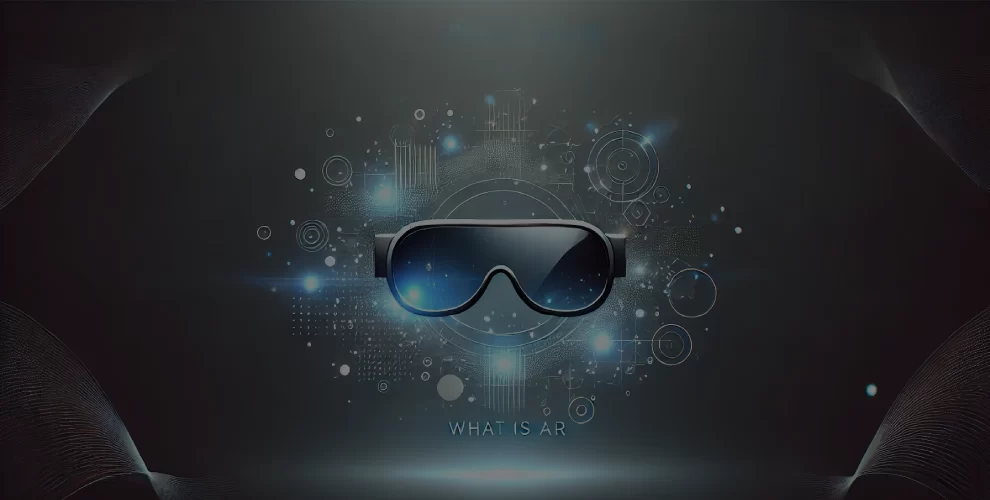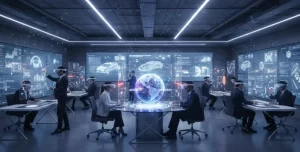
What is an AR (Augmented Reality) Framework and How Does It Work?
Table of Contents
Introduction
Welcome to WikiGlitz! Augmented Reality (AR) is transforming how we interact with the world around us by overlaying digital information onto our physical environment.
In this comprehensive guide, we’ll explore the concept of AR frameworks, how they work, and their applications in various industries.
Join us as we delve into the fascinating world of AR technology.
Key Takeaways
- Enhanced Interactions:AR frameworks enable the seamless integration of digital elements with the real world, enhancing user interactions and experiences across various applications.
- Wide Range of Applications:AR is used in multiple industries, including retail, healthcare, manufacturing, and education, providing innovative solutions and improving efficiency.
- Future Potential:With advancements in technology, AR frameworks are set to become even more sophisticated, offering new possibilities for both consumers and businesses.
What is Augmented Reality (AR)?
Definition and Explanation
Augmented Reality (AR) is a technology that overlays digital information, such as images, videos, or sounds, onto the real world, creating an enhanced version of reality.
Unlike Virtual Reality (VR), which immerses users in a completely virtual environment, AR enhances the real-world environment by adding virtual elements that users can interact with.
Brief History
AR has evolved significantly, finding applications in various fields such as military training, entertainment, and retail.
Today, AR technology is accessible through smartphones, tablets, and specialized headsets, making it widely available to consumers and businesses alike.
How Does an AR Framework Work?
Overview of AR Technology
AR frameworks work by integrating digital content into the real-world environment in real time.
This is achieved through a combination of hardware and software components that detect, process, and display the augmented content.
Hardware Components
- Cameras and Sensors: Cameras capture the real-world environment, while sensors like accelerometers, gyroscopes, and GPS provide contextual data.
- Displays: The augmented content is displayed on screens, such as those on smartphones, tablets, or AR headsets.
- Processing Units: These handle the computational requirements for rendering digital content and integrating it with real-time data.
Software Components
- Computer Vision: Algorithms analyze the camera feed to identify and track objects in the real world.
- 3D Rendering: Software generates 3D digital content that aligns with the physical environment.
- Interaction: User inputs, such as gestures or voice commands, are processed to interact with the augmented content.
Types of AR
- Marker-Based AR: Uses predefined markers (e.g., QR codes) to trigger the display of digital content when recognized by the camera.
- Markerless AR: Utilizes algorithms to detect and track objects in the real world without relying on specific markers.
- Location-Based AR: Integrates digital content based on the user’s geographic location, using GPS and other location-based sensors.
- Projection-Based AR: Projects digital content onto physical surfaces, creating interactive experiences within a defined space.
Applications of AR Frameworks
Retail and E-commerce
AR frameworks enhance the shopping experience by allowing customers to visualize products in their own environment before making a purchase.
For instance, furniture retailers use AR apps to let customers see how a piece of furniture would look in their home, reducing the uncertainty of online shopping and decreasing return rates.
Healthcare and Medicine
Surgeons can use AR to visualize complex anatomical structures during procedures, while medical students can practice surgeries in a risk-free virtual environment.
AR also aids in patient education, helping them understand their conditions and treatment plans better.
Manufacturing and Engineering
AR assists in the manufacturing and engineering sectors by overlaying digital instructions and information onto physical objects.
This improves accuracy and efficiency in assembly processes, reduces errors, and enhances training for new employees.
For example, AR can guide workers through complex assembly tasks with step-by-step visual instructions.
Education and Training
AR transforms education by making learning more interactive and engaging. Students can explore 3D models of historical artifacts, scientific concepts, or geographical locations, making abstract concepts more tangible.
In vocational training, AR provides hands-on practice in a controlled environment, improving skill acquisition and retention.
Future Trends in AR Frameworks
Advancements in Hardware
Future AR devices are expected to be lighter, more powerful, and more affordable.
Advances in display technology, battery life, and processing power will enhance the user experience and broaden the applications of AR frameworks.
Integration with AI
Artificial intelligence will play a significant role in the evolution of AR, enabling more sophisticated object recognition, contextual understanding, and user interaction.
AI-driven AR applications will offer more personalized and intuitive experiences.
Expansion into New Industries
AR is set to expand into new sectors such as agriculture, logistics, and real estate. In agriculture, AR can provide farmers with real-time data on crop health and soil conditions.
In logistics, AR can optimize warehouse operations by guiding workers to the correct locations for picking and packing items.
In real estate, AR can offer virtual property tours, helping buyers visualize properties remotely.
Conclusion
WikiGlitz has brought you this comprehensive guide to understanding AR frameworks and their applications. As AR technology continues to advance, its potential to transform various industries and enhance user experiences grows.
By seamlessly integrating digital content with the real world, AR frameworks are revolutionizing how we interact with our environment.
Stay tuned to WikiGlitz for more insights into the fascinating world of augmented reality.
FAQs
What is Augmented Reality (AR)?
Augmented Reality (AR) is a technology that overlays digital information, such as images, videos, or sounds, onto the real world, creating an enhanced version of reality.
What are the different types of AR?
The different types of AR include Marker-Based AR, Markerless AR, Location-Based AR, and Projection-Based AR.
Want to keep up with our blog?
Our most valuable tips right inside your inbox, once per month.
Error: Contact form not found.
WikiGlitz Team
Welcome to WikiGlitz, your ultimate destination for tech insights and innovation. Our expert team is dedicated to delivering free resources and professional advice on various technology topics, including Artificial Intelligence, Cyber Security, Cloud Computing, and more. We strive to empower our readers with up-to-date information and practical guidance, ensuring you stay ahead in the rapidly evolving tech landscape. At WikiGlitz, we are passionate about making complex technology accessible to everyone. Our team of seasoned experts curates content that is both informative and engaging, helping you understand and leverage the latest tech trends. Whether you're a tech enthusiast or a professional, WikiGlitz is your go-to source for reliable, expert-driven content. Join us on this journey to explore and embrace the future of technology.





